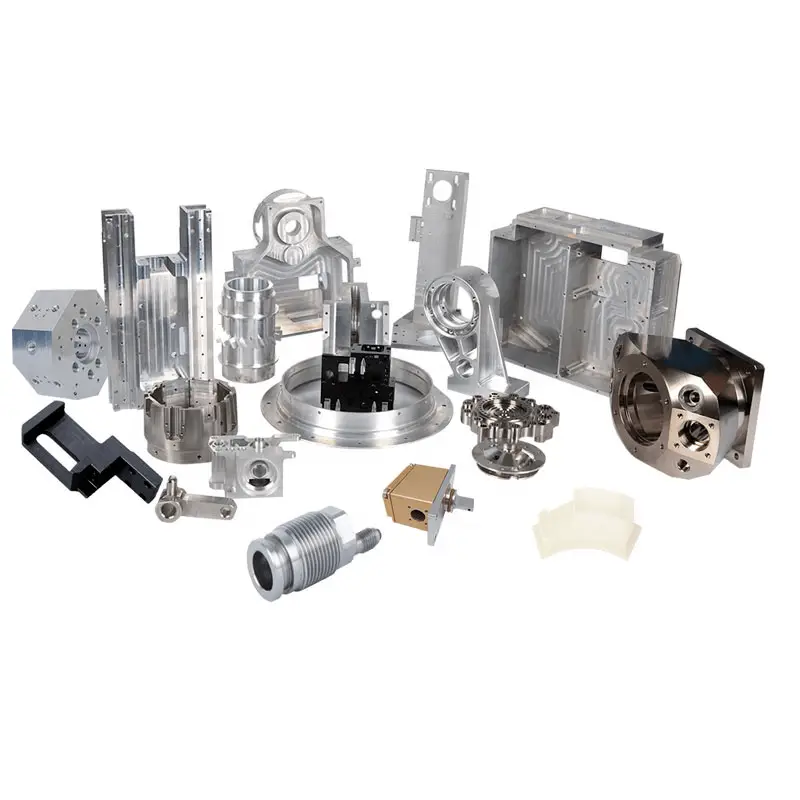
CNC Metal Material Processing and Manufacturing: Technical Analysis, Applications, and Industry Outlook
What is CNC Metal Material Processing and Manufacturing?
CNC (Computer Numerical Control) metal material processing and manufacturing is a modern manufacturing technology that uses computer-controlled machines to precisely process metal materials. Widely used in aerospace, automotive manufacturing, consumer electronics, and medical equipment, CNC technology offers high precision, efficiency, and repeatability, making it a cornerstone of modern manufacturing.
Key Features of CNC Processing
- High Precision
CNC processing relies on numerical control programs to precisely control machinery, achieving micron-level accuracy. It meets the stringent requirements of complex components, whether for planar machining, curved surfaces, or three-dimensional structures. - Versatility
CNC machines can perform multiple processes, including turning, milling, drilling, boring, and cutting. By changing tools, they can work with various metal materials like aluminum alloys, stainless steel, and titanium alloys, accommodating diverse manufacturing needs. - High Efficiency
Automation in programming and integrated multi-process operations enables CNC machines to quickly complete complex workpieces, significantly shortening production cycles. This makes them ideal for both mass production and custom manufacturing. - Consistency and Reliability
Since the entire process is computer-controlled, CNC technology eliminates human error, ensuring product quality consistency and reliability.
Key CNC Metal Processing Techniques
- CNC Turning
CNC lathes are primarily used for processing cylindrical components, enabling efficient turning of cylindrical, conical, and complex curved surfaces. They are commonly used in the production of bearings, threads, and other precision parts. - CNC Milling
CNC milling machines are suitable for machining flat surfaces, grooves, and complex 3D structures, making them essential for mold manufacturing and mechanical part processing. - Drilling and Tapping
CNC drilling machines or machining centers can efficiently drill and tap metal materials, playing a vital role in mechanical assembly and component processing. - Electrical Discharge Machining (EDM)
EDM is used to machine hard materials or materials difficult to cut mechanically, achieving precise results through electrical discharge. - Laser Cutting
Using high-energy laser beams, CNC laser cutting is ideal for quickly shaping thin metal sheets, offering smooth cuts and high-speed operation.
Applications of CNC Metal Processing
- Aerospace
CNC processing is indispensable in aerospace for manufacturing components such as engine parts and fuselage structures, which demand extreme precision and high material performance. - Automotive Manufacturing
Engine components, chassis parts, and decorative elements all require high-precision CNC machining to meet the automotive industry’s large-scale production needs. - Consumer Electronics
Lightweight and high-strength structural components like smartphone casings and laptop brackets are precisely manufactured using CNC technology for materials such as aluminum and stainless steel. - Medical Equipment
Precision instrument parts and implantable devices (e.g., artificial joints) require ultra-high precision, making CNC machining increasingly important in the medical field. - Mold Manufacturing
CNC technology is widely applied in mold processing, enabling efficient production of high-precision molds for plastic parts and die-casting products.
Advantages and Challenges of CNC Processing
Advantages:
- Cost Reduction: Automated workflows lower labor costs and reduce material waste.
- Adaptability to Complex Designs: CNC processing supports the manufacturing of complex geometries, meeting changing market demands quickly.
- Stable Quality: The process offers high consistency, suitable for producing high-standard and reliable components.
Challenges:
- High Initial Investment: CNC equipment and software entail significant upfront costs, posing challenges for small and medium enterprises.
- Technical Expertise Required: Operators must possess programming skills and knowledge of equipment maintenance.
- Material Dependency: Some metal materials may experience deformation or surface roughness issues during machining.
Future Trends in CNC Metal Processing
- Intelligent and Automated Processing
With the advancement of Industry 4.0, CNC processing is becoming smarter, leveraging AI to achieve adaptive machining, real-time monitoring, and automated optimization, further enhancing efficiency and precision. - Sustainable Manufacturing
In response to growing environmental concerns, CNC processing will increasingly adopt sustainable materials and energy-efficient technologies, reducing energy consumption and carbon emissions. - Multi-Axis Machining
Future CNC technology will see widespread adoption of five-axis or even seven-axis machining, enabling the manufacturing of complex curved surfaces and high-precision components. - Integration with Additive Manufacturing
CNC processing will combine with additive manufacturing technologies like 3D printing, creating a hybrid manufacturing mode that integrates subtractive and additive methods to meet diverse market needs.
Conclusion
CNC metal material processing and manufacturing stands out for its high precision, efficiency, and reliability, making it an essential technology in modern manufacturing. From aerospace and automotive industries to consumer electronics and medical equipment, CNC machining has demonstrated unparalleled value. As technology continues to evolve, CNC processing is moving toward intelligence, sustainability, and multifunctionality, paving the way for a more innovative future in manufacturing.
Keywords: CNC machining, metal processing, CNC manufacturing, precision machining, CNC turning, CNC milling, metalworking techniques, CNC applications

